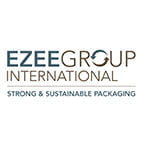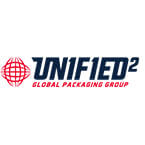Table of Contents
In today’s sustainability-focused world, the packaging industry is transforming when it comes to custom moulded fibre packaging. The global sustainable packaging market is projected to grow to nearly $492 billion by 2029, driven by a push for eco-friendly, circular solutions. Omni-Pac Group is at the forefront of this movement, turning recycled materials into high-performance moulded fibre packaging. This article explores how Omni-Pac’s custom-designed moulded fibre packaging contributes to the circular economy – blending technical insight, informative content, and brand storytelling – and why it’s time for the entire industry to think beyond the box.
Understanding the Circular Economy in Custom Moulded Fibre Packaging
In a nutshell, a circular economy is about designing out waste and keeping resources in use. “Essentially, the circular economy is all about giving ‘waste’ a second life. Instead of throwing something away, we find a way to reuse, repair, or recycle it to keep it in use for as long as possible,” as Omni-Pac Group UK explains. This approach contrasts with the traditional linear “take–make–dispose” model by reducing material use, redesigning products to be less resource-intensive, and recapturing ‘waste’ as a resource.
For Omni-Pac Group, “circular economy” is far more than a buzzword – it’s at the core of their business model and ethos. In practice, this means redefining “waste” as a valuable input. Instead of viewing used cardboard or paper as trash, Omni-Pac treats it as feedstock for new packaging. By keeping materials in a continuous loop of use and reuse, this approach saves resources and reduces waste, directly supporting sustainability goals. It’s a philosophy of “reduce, reuse, recycle” put into action at an industrial scale.
From Recycled Paper to Custom Packaging: Omni-Pac’s Closed-Loop Process
Omni-Pac’s process starts with recycled paper and cardboard – the company obtains discarded corrugated board, newsprint, and other paper waste and gives it new life as packaging. In fact, Omni-Pac recycles over 1 billion tons of used paper and cardboard each year, diverting this material from landfills. Much of this feedstock is locally sourced; for example, the Omni-Pac UK facility partnered with a nearby corrugated cardboard manufacturer to redirect that plant’s offcuts and waste into Omni-Pac’s pulp supply. This kind of local loop not only secures a steady supply of raw material but also cuts down on transport and embraces the circular mantra of one company’s waste becoming another’s resource.
Next, the waste paper is pulped and moulded into packaging products. Omni-Pac operates a wet moulding process: the collected paper is mixed with water to form a pulp slurry, which is then formed into shape using moulds. Notably, Omni-Pac maintains full control over this manufacturing chain – the group designs and builds its own machines and moulds in-house. This in-house tooling capability means they can create custom packaging designs tailored to a client’s product, and do so quickly and precisely. Advanced 3d modelling and precision engineering go into each mould, ensuring that the resulting fibre package fits its intended item like a glove. After moulding, the products are dried (sometimes with heat “ovens” that harden the fibre), and then go through any finishing touches (trimming, quality checks, etc.) known as after-press processing. With in-house tooling and after-press technology, Omni-Pac guarantees a high-quality finish and performance for every custom design.
Throughout this production, efficiency and sustainability are paramount. The facilities use closed-loop water systems to minimise water consumption (pulp water is filtered and reused) and employ energy-efficient processes. Little to no harmful chemicals are needed to bond or treat the fibre; the process relies mainly on water and heat, so the resulting packaging is free of toxins. The entire operation adheres to strict quality and safety standards – Omni-Pac’s factories are certified to ISO 9001 (for quality management) and BRCGS standards (for packaging hygiene and food safety). They also use FSC-certified fibre sources to ensure responsible use of natural resources. These certifications give customers confidence that recycled fibre packaging can meet the same rigorous requirements as conventional packaging.
Crucially, Omni-Pac has proven that circular processes can scale. What started as a single facility in France has grown into a pan-European operation with highly automated plants in the UK, France, and Germany. Thanks to continuous innovation, Omni-Pac’s network of facilities can now produce over 3 billion packaging units per year– all made from recycled input. In other words, billions of items that might have been waste (old newspapers, used boxes) are transformed each year into useful packaging. By closing the loop from waste paper to new product and back again (since the fibre packages are themselves recyclable or compostable), Omni-Pac exemplifies how to manufacture in a truly circular way.
High-Performance Packaging for Food, Medical, and Horticulture
Designing sustainable packaging is only half the story – it also needs to perform in real-world applications. Omni-Pac’s custom moulded fibre solutions are engineered to meet the demands of various industries, from keeping food fresh to protecting medical supplies or nurturing plants. Here’s how moulded fibre packaging excels in key sectors:
- Food & Agriculture: In the food industry, packaging must be hygienic, protective, and often weather-resistant. Omni-Pac produces fibre trays and containers for everything from fresh produce to eggs and poultry. These moulded fibre trays are BRC-certified food-safe and meet strict regulations for direct food contact. They also offer excellent cushioning and shock absorption to protect delicate items (like fruit or eggs) during transit, with designs that are stackable to save space. Notably, fibre packaging can even handle chilled and wet conditions – for instance, Omni-Pac’s newest multi-purpose tray features special moisture resistance for chilled applications (so it won’t get soggy in the fridge). All this is achieved without plastic or foam. An example in agriculture: fibre egg cartons and produce trays keep food safe and secure, then can be tossed in the recycling or compost after use, eliminating the waste associated with single-use plastic clamshells.
- Medical & Healthcare: Hospitals and medical manufacturers are turning to moulded fibre for items like disposable trays, bowls, and containers. Omni-Pac’s moulded fibre medical products are designed to be fully water-tight yet 100% biodegradable. This means they can safely hold liquids or biohazard materials during use, but afterwards they break down naturally instead of adding to bio-waste pollution. For example, a pulp moulded kidney dish or procedure tray can be used and then composted or safely disposed of with minimal environmental impact. The fibre material provides a “clean, biologically-safe disposal”, giving healthcare providers peace of mind that there will be no lasting plastic waste. Additionally, using fibre eliminates the need for certain single-use plastic items in healthcare, aligning with hospitals’ infection control and sustainability goals. The medical-grade packaging is made in controlled conditions (ISO 9001 and BRCGS standards) to ensure it meets the necessary hygiene and quality specs. In short, even in critical applications, fibre packaging delivers performance (strength, leak resistance, sterility) with the bonus of easy end-of-life disposal.
- Horticulture: The horticultural sector is another area where fibre packaging shines by replacing plastic. Garden centres and growers typically use plastic plant pots and seed trays, most of which are used once and thrown away. In the UK alone, an estimated 500 million plastic plant pots are used every year, and sadly, many end up in landfills due to limited recycling options. Omni-Pac offers an alternative: moulded fibre plant pots and trays that are biodegradable and compostable. These fibre pots can often be planted directly into the soil with the seedling, or composted after use, returning nutrients to the earth. This eliminates the pile-up of orphaned plastic pots in gardeners’ sheds and landfills. Fibre plant trays are a “great alternative to plastic” because they won’t linger in the environment – they decompose in months rather than centuries. As a bonus, they insulate roots naturally and can even retain moisture for plants better than thin plastic. By switching to fibre-based horticultural packaging, nurseries and gardeners can drastically cut down on plastic waste. It’s a practical example of circular economy in action: grow, use, compost, repeat. Given that most plastic pots are not recycled (globally, less than 10% of plastic waste is recycled), adopting fibre pots offers a clear environmental win for the horticulture industry.
Across these sectors, moulded fibre packaging proves that sustainable does not mean sub-par. It can meet industry-specific needs (food-safe, medical-safe, etc.), often matching or exceeding the performance of the plastic or foam products it replaces. And after serving its purpose, the packaging can either be recycled again or returned to nature (via composting) rather than becoming pollution. This kind of versatility is why demand for fibre packaging is rising in food, medical, horticulture, and beyond.
By the Numbers: Omni-Pac’s Circular Impact
To appreciate the scale and impact of Omni-Pac Group’s circular packaging initiative, let’s look at some key statistics from their operations:
- Waste Repurposed into Packaging: Every year, Omni-Pac transforms over 1 billion tonnes of recovered paper and cardboard into new packaging. That includes about 700,000 tonnes of “waste” corrugated board diverted from a single local supplier in the UK, which is now used to make ~500 million fibre packages. This is material that would otherwise likely be burned or landfilled, now given a second life as useful products.
- Packaging Units Produced: With multiple facilities running, Omni-Pac produces on the order of 1+ billion moulded fibre pieces annually (the UK plant alone outputs ~1 billion pieces a year). The group’s production capacity exceeds 3 billion units per year, illustrating how circular packaging can be scaled to industrial volumes. That’s over a billion plastic or foam packaging items potentially eliminated by fibre alternatives each year.
- Global Footprint: Omni-Pac operates three state-of-the-art factories in the UK, France, and Germany, which together employ over 600 people worldwide. These facilities collectively supply customers in 50+ countries, serving a truly global market from locally sourced materials. By being close to both the source of raw materials and the end customers, Omni-Pac maximises efficiency and minimises transport emissions.
(These operations are backed by robust standards: all sites are ISO 9001 and BRCGS AA certified, with FSC certification for responsible fibre sourcing. This ensures that large-scale production doesn’t compromise on quality or sustainability.)
The numbers tell a compelling story – circular packaging at scale is not a future ideal, but a present reality. Omni-Pac alone has redirected hundreds of thousands of tonnes of paper waste into products and replaced over a billion would-be plastic packages with biodegradable fibre ones. Each of those fibre packages represents a small reduction in landfill load, ocean pollution, and carbon emissions, adding up to a very significant impact.
Fibre vs. Plastic: Environmental Benefits at a Glance
Why exactly is fibre-based packaging better for the environment than the legacy plastic or Styrofoam packaging it replaces? The advantages are multi-faceted, affecting end-of-life, resource usage, and overall footprint. Consider these environmental benefits of moulded fibre packaging, supported by research and data:
- Higher Recyclability: Paper-based packaging (like moulded fibre) has the highest recycling rate of any packaging material – about 82.6% in Europe, far above the recycling rate for plastic packaging (~39.8%). This means fibre packaging is much more likely to be recovered and reprocessed into new products, whereas the majority of plastic packaging ends up as waste. A fibre tray can be tossed in the paper recycling bin almost anywhere in the world; a plastic tray, by contrast, might not be recyclable due to food contamination or material type. The result is a much higher reuse of material for fibre and significantly less burden on landfills.
- Biodegradability (No Microplastics): Unlike petroleum-based plastics, moulded fibre is fully biodegradable and compostable. A discarded fibre package can break down in a matter of months under natural conditions, returning to the soil as organic matter. Plastic packaging, on the other hand, can persist for decades or even centuries – for example, a single plastic bottle may take around 450 years to decompose. As it degrades, plastic doesn’t truly go away; it fragments into tiny microplastics that pollute ecosystems. Fibre packaging avoids this issue entirely – it leaves no permanent pollutants. Once decomposed, it simply enriches the soil rather than contaminating it. By using fibre instead of plastic, companies prevent the formation of long-lasting litter in landfills and oceans.
- Lower Carbon Footprint: When comparing the production of fibre packaging to traditional plastics, studies show a clear carbon advantage for fibre. One life-cycle analysis found that cellulose fibre-based packaging has far lower greenhouse gas emissions – on the order of <1.5 kg CO₂ equivalent per kg of packaging – whereas common plastic packaging materials range from 3 to 5 kg CO₂ per kg. This means that pound-for-pound, producing fibre packaging can generate 50–70% less carbon emissions than producing plastic packaging. The reasons? Fibre is often made from recycled or renewable inputs (less upstream impact than oil extraction for plastics), and the pulp moulding process typically uses less energy and water than polymer production and moulding. Additionally, every piece of recycled fibre used saves the emissions that would have been spent creating virgin paper or plastic. All told, moving to fibre helps shrink the carbon footprint of packaging, contributing to corporate CO₂ reduction targets and climate goals.
In summary, moulded fibre packaging outperforms plastic packaging on key environmental metrics – it’s easier to recycle, it safely biodegrades without polluting, and it tends to have a lower overall carbon impact. It also comes from renewable or recycled resources (trees and paper), whereas plastic is made from fossil fuels. By embracing fibre, companies can significantly mitigate the environmental problems associated with single-use plastics, from overflowing landfills to ocean pollution and carbon emissions.
Innovating for a Circular Future
A commitment to the circular economy doesn’t end with using recycled paper – it also drives continuous innovation in design and production. Omni-Pac Group recognises that to replace plastic at a large scale, fibre packaging must keep evolving to meet new needs and improve performance. That’s why the company heavily invests in R&D and innovative design. “Innovation is key to furthering our sustainable practices; it’s something we continually look to review and improve,” notes Omni-Pac, highlighting efforts to explore alternative fibres, improved recycling technologies, and enhanced durability for their products.
One example of Omni-Pac’s innovation is the development of a Versatile Multi-Purpose Tray, launched in early 2024 as a game-changer in sustainable packaging. This tray was designed to be a universal solution usable across different products and industries – an approach that can maximise reuse and reduce the need for multiple packaging types. The multi-purpose tray is crafted entirely from recycled fibre and is “fully biodegradable and recyclable”, fitting neatly into the circular economy ethos. What makes it special is its adaptive design: it can accommodate various sizes (for instance, different pot diameters for plants) with one format, and it’s built to be practical and space-efficient for shipping. It even boasts moisture-resistant properties so that it can be used for chilled foods or damp environments without losing integrity. By innovating such versatile and resilient designs, Omni-Pac is pushing the boundaries of where moulded fibre can go, entering applications traditionally tough for paper-based packaging. This not only broadens the market for sustainable packaging but also helps customers simplify their packaging lineup with one eco-friendly solution replacing several conventional ones.
On the production side, Omni-Pac’s in-house engineering allows rapid prototyping and scaling of new ideas. If a client comes with a unique product that needs protection, the design team can quickly create a 3d model and tool up a mould to produce a custom prototype. This customer-centric development cycle means even niche products (from electronics to speciality medical devices) can get a sustainable packaging solution tailored to them. It lowers the barrier for companies in various sectors to switch to circular packaging, since Omni-Pac handles the heavy lifting of design and testing. Moreover, the company’s willingness to experiment with new fibre sources (such as agricultural residues or fast-growing plant fibres) could further reduce reliance on wood pulp and utilise other waste streams in the future. Such innovations will make the fibre packaging industry even more circular and sustainable.
By steadily improving the strength, versatility, and efficiency of moulded fibre packaging, Omni-Pac and its peers are ensuring that sustainability doesn’t come at the expense of functionality or economics. These innovations send a clear message: fibre packaging is not a step backwards to old-fashioned paper – it’s a step forward into a high-tech, adaptable, and circular packaging future.
Conclusion: Beyond the Box – A Call to Action for Industry
Omni-Pac Group’s journey demonstrates that moving “beyond the box” of linear thinking is not only possible but profitable and impactful. They have shown that waste can be reinvented into value, and that packaging can be engineered for circularity without sacrificing performance or scalability. The success of their custom moulded fibre solutions offers a blueprint for the packaging industry at large. It’s an invitation for businesses across the board – from food to pharma, retail to electronics – to reimagine their packaging through the lens of the circular economy.
Why should the wider industry embrace circular packaging? Firstly, because our planet demands it. The environmental stakes of “business as usual” (single-use plastics and throwaway materials) are simply too high – we face overflowing landfills, plastic-choked oceans, and mounting carbon emissions. Every cardboard clamshell replacing a plastic clamshell is a step toward alleviating those pressures. Multiply that by billions of packages, and the change is enormous. If every company followed suit in closing the loop on packaging, the cumulative reduction in waste and pollution would be transformative.
Secondly, consumers and regulators are increasingly insisting on sustainability. Eco-conscious consumers are voting with their wallets – in one survey, almost 80% of consumers said they intend to buy more environmentally friendly products moving forward, even if it means paying a bit more. Governments, too, are introducing stricter rules to phase out problematic plastics and require higher recycled content in packaging. In short, demand is rising for circular solutions, and businesses that lead in this area stand to gain reputationally and commercially. Offering packaging that is compostable or made from 100% recycled inputs is a strong differentiator in the market today. It tells customers that a company is responsible and forward-thinking. Embracing circular packaging is not just about avoiding risk (of regulation or public backlash); it’s about seizing an opportunity to innovate and capture the modern customer’s loyalty.
To truly shift the paradigm, collaboration is key. Omni-Pac’s model works so well in part due to partnerships – e.g. working with CorrBoard to source waste, and working with clients to design bespoke solutions. This kind of cross-industry collaboration will be vital for scaling circular economy principles. Material suppliers, packaging converters, and product manufacturers need to form ecosystems where one company’s output becomes another’s input. By sharing knowledge and closing loops together, we can accelerate the transition to circular packaging on an industry-wide level.
The call to action is clear: it’s time for packaging professionals, brand owners, and supply chain managers to go beyond the conventional box. Rethink packaging not as a disposable necessity, but as a continuous material journey. Choose designs and materials that can be regenerated after use, be it through recycling or composting. Invest in the development of packaging that enriches rather than harms the environment at end-of-life. And don’t be afraid to innovate and tailor solutions, as Omni-Pac has, because one-size-fits-all is often the enemy of sustainability.
“Beyond the box” thinking has shown that a package can start as recycled scrap and end as compost, all while safely delivering a product to a happy customer. It’s a win-win for business and the planet. The more companies that adopt this mindset, the closer we get to a truly circular economy for packaging – one where waste is a forgotten concept. The momentum is building, but broader adoption is needed. Let’s take inspiration from the moulded fibre revolution and commit to making circular packaging the new normal. The box has served us well, but the future lies beyond it – in packaging solutions that support a healthy, sustainable, and circular world.


















